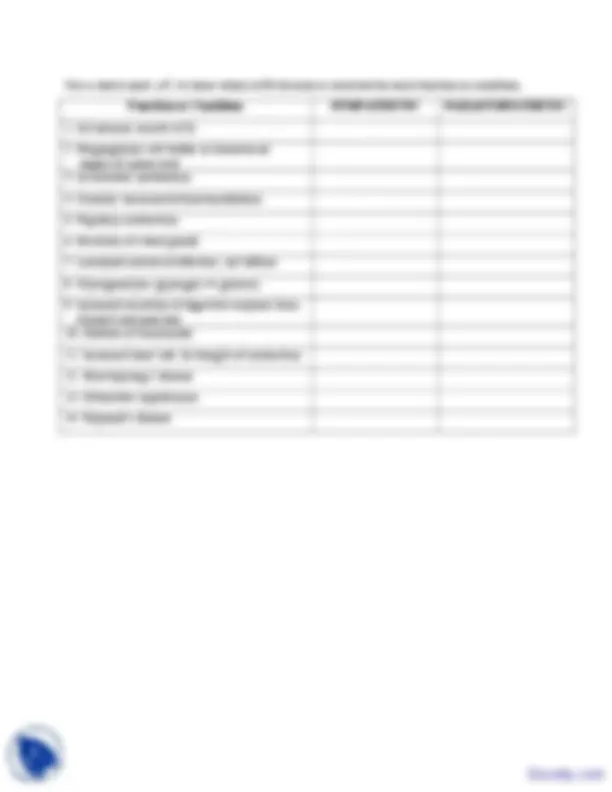



Study with the several resources on Docsity

Earn points by helping other students or get them with a premium plan


Prepare for your exams
Study with the several resources on Docsity

Earn points to download
Earn points by helping other students or get them with a premium plan
Community
Ask the community for help and clear up your study doubts
Discover the best universities in your country according to Docsity users
Free resources
Download our free guides on studying techniques, anxiety management strategies, and thesis advice from Docsity tutors
This lecture is taken from quiz of Physiology and Anatomy. Key important points are: Divisions of Autonomic Nervous System, Types of Effectors, Cholinergic Fibers, Adrenergic Fibers, Nicotinic Receptors, Postsynaptic Membrane, Muscarinic Receptors, Cooperative Effects
Typology: Exercises
1 / 2

This page cannot be seen from the preview
Don't miss anything!


Study Guide-Autonomic Nervous System
Use a check mark ( ) to show which ANS division is involved for each function or condition: Function or Condition SYMPATHETIC PARASYMPATHETIC